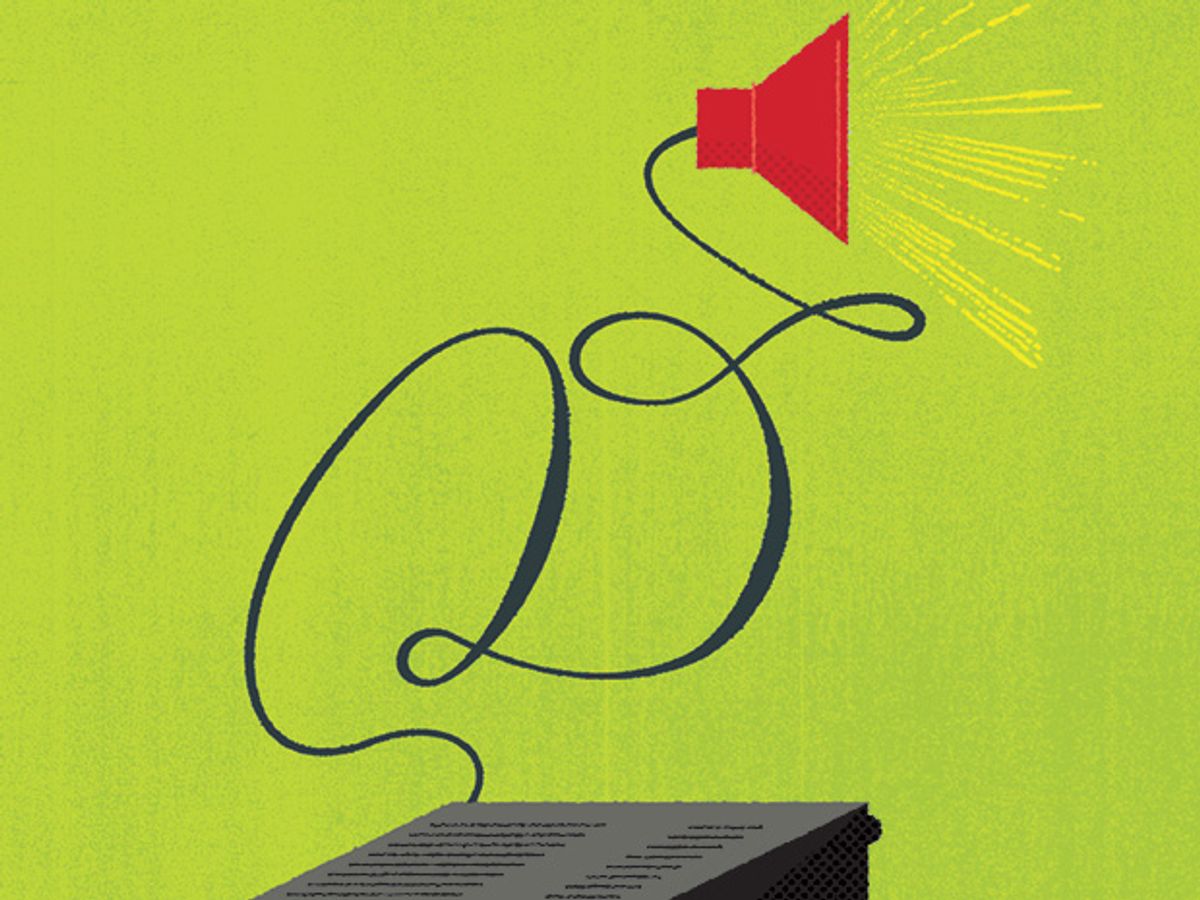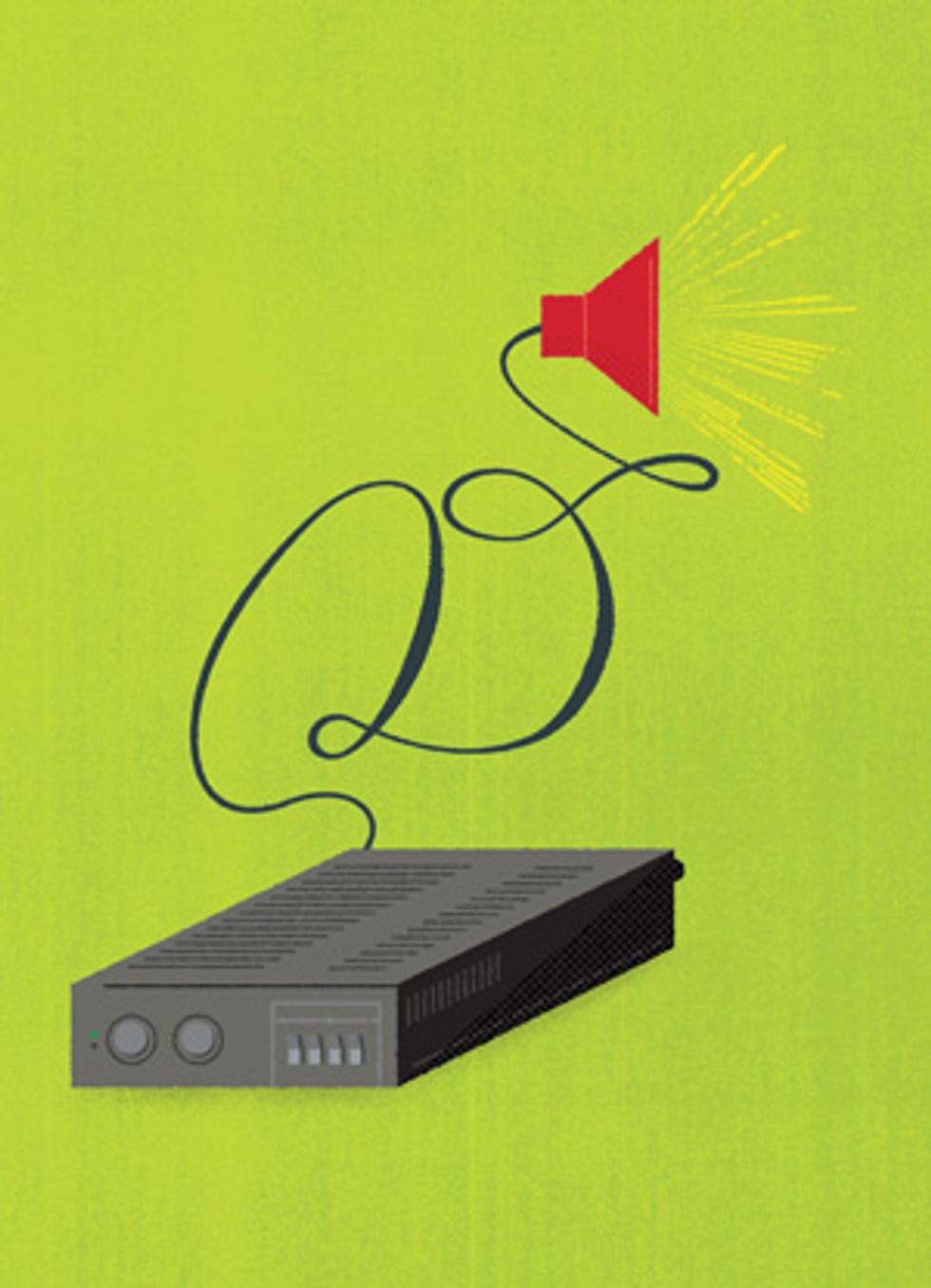Class-D Audio: The Power and the Glory
A quiet revolution is transforming audio electronics

This is part of IEEE Spectrum’s special report: Top 11 Technologies of the Decade

Even in the go-go world of high tech, it’s pretty rare that a technological leap delivers both markedly superior performance and stunningly greater efficiency. That neat trick happened with class-D audio amplifiers, which now dominate the market for applications in car stereos, home-theater-in-a-box systems, television sets, and personal computers.
Their success has been a long time coming. The first commercially available class-D amps came in the 1960s from the British company Sinclair Radionics (now Thurlby Thandar Instruments), but they didn’t work well. Somewhat better ones came along in the 1970s and 1980s: John Ulrick designed a couple of class-D amps for Infinity Systems in the early and mid-1970s, and a decade later Brian Attwood did a series of “digital energy conversion amplifiers” for Peavey Electronics Corp. But in those days class-D theory was ahead of implementation, because the available components simply weren’t good enough to produce high-quality sound.
The problem was speed: Class-D amps sample the input audio waveform hundreds of thousands of times a second before amplifying it, and it wasn’t until the 1990s that cheap and reliable MOSFETs became available that were fast enough to sample a waveform at such high frequencies, says Bruno Putzeys, the chief engineer at Hypex Electronics. Hypex, in Groningen, Netherlands, is a leading maker of audiophile class-D amplifier modules, which are incorporated into products sold by other firms.
“What it took was for a couple of companies to take the plunge,” Putzeys adds. Those pioneers were Tact Audio, ICEpower, and Tripath Technology, all of which released their first class-D offerings in the late 1990s. Tact, now called Lyngdorf, rocked the audio community in 1998 with a US $9800 class-D amplifier called the TacT Millennium, which was designed by the Danish engineer Lars Risbo. It dazzled as much for its industrial design as for its engineering: The amp had a large volume knob with a digital display in its center.
COMPANY TO WATCH:
Intersil D2Audio,
Milpitas, Calif.
Intersil D2Audio sells products powered by its Digital Audio Engine technology, which combines class-D amplifiers with signal processing to minimize the effects of noisy power supplies or harsh automotive environments.
BET YOU
DIDN’T KNOW:
The first class-D audio amplifier offered to the public, in 1964, was an £8 kit from the British company Sinclair Radionics. Its power output was so far below the claimed 10 watts that Wireless World magazine, deluged with complaints, supposedly declined to take future advertising from Sinclair.
ICEpower was founded jointly by another Danish engineer, Karsten Nielsen, who designed the company’s first amplifiers and amplifier modules, and the Danish audio company Bang & Olufsen. ICEpower is best known for its combined power supply and amplifier modules, although its single biggest source of income is its MobileSound line of amplifier chips for cellphones.
Tripath, in San Jose, Calif., was the first to introduce a class-D amplifier chip, the TA1101, in 1996. It was used in Apple’s celebrated Power Mac G4 Cube. Tripath’s first big hit, the TA2020, in 1998, could funnel 20 watts per channel into 4-ohm speakers (see “25 Microchips That Shook the World”). It was used in ministereos and early flat-screen TVs. “We were shipping millions of chips every quarter to companies like Samsung, Panasonic, Toshiba, Sanyo, NEC, Onkyo, and Sony,” says Adya Tripathi, who was the company’s president and CEO.
Large stocks of Tripath chips are still available. They feed an e-Bay market for tiny, ultracheap (as low as $15) amps from China and also a thriving business among hobbyists and DIYers.
Today almost all of the audio amplifier market, from cheap cellphone chips to unbelievably expensive home hi-fi, is split between class-D and class-AB amplifiers; the latter are the long-established technology, and they still dominate in home audio and also in mobile music players, including iPods, MP3s, and smartphones. Those pocket players use micropower amps, which put out fewer than 100 milliwatts per channel. Class-D chips are available for these applications, but they can’t yet match the price of the class-AB chips that are available for a few cents per chip from such giants as National Semiconductor, Maxim, Texas Instruments, Sanyo, and various Taiwanese companies. Millions of those amps are sold every year. And class-AB isn’t even the only other competitor in this fast-growing field: Class-G amp chips share class-D’s high efficiency and are also supposedly easier to integrate into a dense and highly complicated system like a smartphone.
Nevertheless, the micropower category is still a big market possibility for class-D chips, Tripathi insists. It’s only a matter of time before the huge efficiency advantage of class-D tips the scales in their favor, just as class-AB amps slowly but surely displaced class-A decades ago. Some day, without a doubt, it will be a class-D world.
In the meantime, class-D amps are making steady inroads in the home market, where they can exploit to full advantage modern components that are cheap but have very high performance: MOSFETs just keep getting better and better and cheaper and cheaper. And for the technically inclined, amplifier modules and kits allow anyone with modest soldering skills to get class-D sound, highly precise and detailed, for a few hundred dollars. One of our favorite kits is the SDS-224 kit from Class D Audio, with its robust power supply.
Class-D amps are starting to do well even in the rarefied high-end niche, where an amplifier can cost many thousands of dollars. Putzeys just completed and tested an amplifier design with total harmonic distortion of 0.001 percent at full power across the entire audio range, scalable to 2000 W and beyond. It is a specification that would have been dismissed as science fiction before class-D amplifiers. At any price.
For all of IEEE Spectrum’s Top 11 Technologies of the Decade, visit the special report.